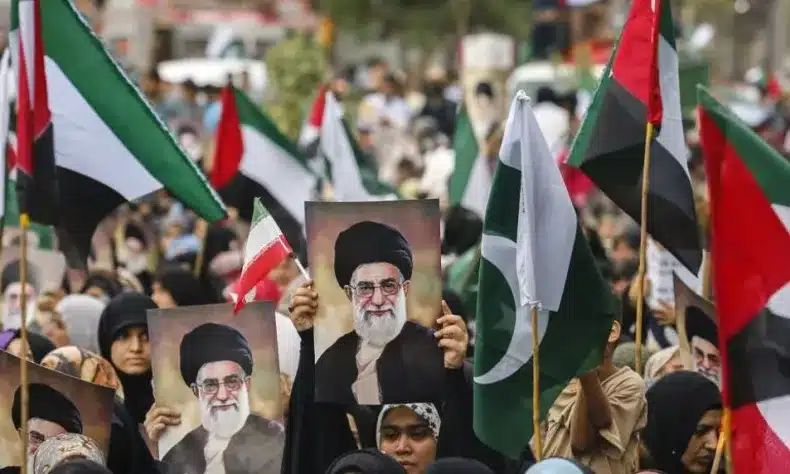Amidst Turmoil, Is Any Nation in Asia Emerging Victorious?

US President Donald Trump has once again extended the deadline for tariff negotiations, a move that has drawn sharp criticism from Japan’s Prime Minister Shigeru Ishiba. The proposed 25% tariff on Japanese goods has left Tokyo, a longstanding ally of the US, scrambling to secure concessions for its struggling car manufacturers while resisting pressure to open its markets to American rice. As negotiations continue, Japan finds itself among 23 nations facing potential tariffs, raising concerns about the future of global trade dynamics.
Negotiators Gain Breathing Room
The extension of the tariff deadline offers a temporary reprieve for many countries targeted by Trump’s earlier announcements. With more than three weeks added to negotiate, nations like Thailand and Malaysia, which recently received tariff letters, are eager to engage in discussions. These countries are particularly vulnerable as they navigate the complexities of US-China trade tensions, especially concerning goods rerouted through third countries. Economists suggest that further extensions may be necessary due to the intricate nature of trade agreements.
Countries will require time to comprehend and implement Trump’s demands, which remain somewhat ambiguous. For instance, the specifics regarding transhipped goods in Vietnam’s trade deal with the US are unclear. This ambiguity necessitates advanced tracking technologies to manage supply chains effectively. Experts indicate that the process will be slow and involve multiple stakeholders, including tech firms and logistics partners, as countries strive to meet the evolving requirements set forth by the US administration.
Asian Manufacturers Face Challenges
The ongoing tariff situation poses significant challenges for Asian manufacturers, marking a downturn for global trade. Companies across the US, Europe, and China with international operations are at risk, impacting not only exporters but also US importers and consumers. The economic aspirations of many Asian nations, which have thrived on manufacturing sectors ranging from electronics to textiles, are now under threat.
While it is difficult to pinpoint clear winners and losers in this scenario, certain countries may suffer more than others. Vietnam, which was the first in Asia to secure a trade deal, now faces tariffs as high as 40%. Similarly, Cambodia, heavily reliant on exports, is negotiating under the looming threat of a 35% tariff. In contrast, wealthier nations like South Korea and Japan may have more leverage due to their stronger economic positions and geopolitical influence. India, which has not yet received a tariff letter, is also grappling with its own set of challenges, including access to its agricultural market.
Impact on the US-Japan Alliance
Despite Japan’s close economic and military ties with the US, it is being treated similarly to other Asian trade partners, raising concerns about the future of this longstanding alliance. Economist Jesper Koll notes that Japan’s tough negotiating stance may have frustrated Trump, especially as the country has resisted US demands regarding rice imports and military spending increases.
In response to the tariffs announced in April, Japan declared an economic emergency and established numerous consultation centers to assist affected businesses. As Japan prepares for its upper-house elections, the likelihood of reaching a trade agreement by the August deadline appears slim. The uncertainty surrounding the negotiations leaves both nations in a precarious position, with Japan seeking a credible deal while grappling with the unpredictability of US trade policy.
Uncertain Outcomes for US and China
The ongoing trade tensions between the US and China have positioned Asia as a critical battleground. Analysts suggest that Trump’s repeated deadline extensions may weaken the US’s bargaining power, revealing vulnerabilities in its trade strategy. The complexity of these negotiations could lead to significant shifts in trade relationships that have developed over decades.
Trump’s decision to communicate tariff letters through public channels rather than traditional diplomatic means has raised eyebrows, with some experts describing it as “political theatre.” This approach may inadvertently benefit China, which is positioning itself as a stable alternative amid the chaos of US trade policy. While the US market remains challenging to replace, China is simultaneously navigating its own trade negotiations with the US, with a deadline set for mid-August. As both nations seek to redefine their trade relationships, the path forward remains fraught with uncertainty and complexity.
Observer Voice is the one stop site for National, International news, Sports, Editor’s Choice, Art/culture contents, Quotes and much more. We also cover historical contents. Historical contents includes World History, Indian History, and what happened today. The website also covers Entertainment across the India and World.
Follow Us on Twitter, Instagram, Facebook, & LinkedIn

